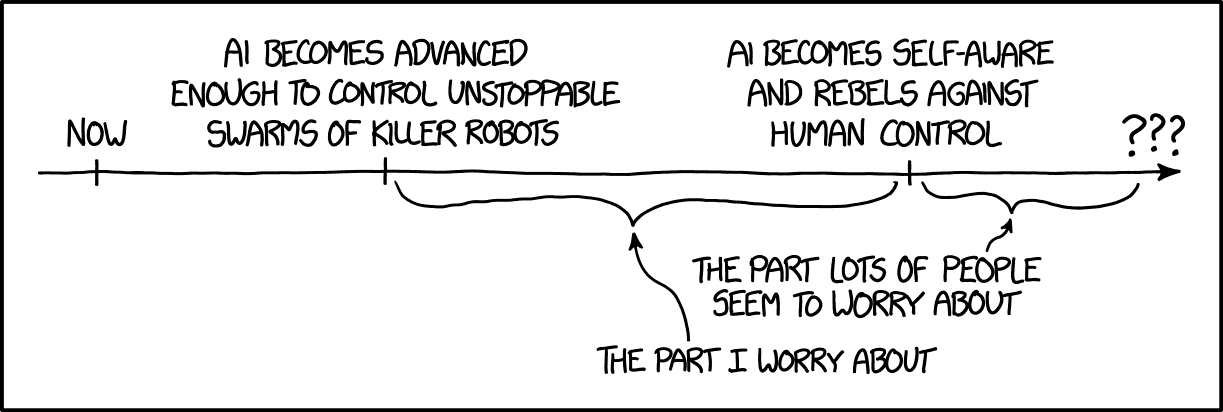1000mH [she/her, they/them]
- 33 Posts
- 121 Comments

 7·5 months ago
7·5 months agoDoes that mean free pizza?


 18·5 months ago
18·5 months agoIOF is crying watching this
The dexterity!

 11·6 months ago
11·6 months agoPrincess of Genovia <3

 4·6 months ago
4·6 months agoWe’re going to be very upset with you if you ever stop posting without a heads up

 12·6 months ago
12·6 months agoOh – I’m the doomer
I can hear this image

 21·6 months ago
21·6 months ago
Access, equity and solidarity: the foundations of Cuba’s health system : Peoples Dispatch
Cuba has the highest ratio of doctors per inhabitant in the world. We have more than 100,000 doctors for a population of 11 million – 9.2 for every 1,000 inhabitants. We also have the highest ratio of health workers per inhabitant – 500,000 overall. But it’s not that we have leftover professionals. We don’t have so many doctors because we like training them, but because we have a health policy that employs all of them. This includes those who are in management positions and those who are committed to our international solidarity missions, our collaboration in health.

 14·6 months ago
14·6 months agodeleted by creator

 59·6 months ago
59·6 months agoWomen and Minorities Bear the Brunt of Medical Misdiagnosis | naked capitalism
In a study published Jan. 8 in JAMA Internal Medicine, researchers found that nearly 1 in 4 hospital patients who died or were transferred to intensive care had experienced a diagnostic error. Nearly 18% of misdiagnosed patients were harmed or died.
In all, an estimated 795,000 patients a year die or are permanently disabled because of misdiagnosis, according to a study published in July in the BMJ Quality & Safety periodical.
Women and racial and ethnic minorities are 20% to 30% more likely than white men to experience a misdiagnosis, said David Newman-Toker, a professor of neurology at Johns Hopkins School of Medicine and the lead author of the BMJ study. “That’s significant and inexcusable,” he said.
Researchers call misdiagnosis an urgent public health problem. The study found that rates of misdiagnosis range from 1.5% of heart attacks to 17.5% of strokes and 22.5% of lung cancers.
Maternal mortality for Black mothers has increased dramatically in recent years. The United States has the highest maternal mortality rate among developed countries. According to the Centers for Disease Control and Prevention, non-Hispanic Black mothers are 2.6 times as likely to die as non-Hispanic white moms. More than half of these deaths take place within a year after delivery.
Research shows that Black women with childbirth-related heart failure are typically diagnosed later than white women, said Jennifer Lewey, co-director of the pregnancy and heart disease program at Penn Medicine. That can allow patients to further deteriorate, making Black women less likely to fully recover and more likely to suffer from weakened hearts for the rest of their lives.
Racial and gender disparities are widespread.
Women and minority patients suffering from heart attacks are more likely than others to be discharged without diagnosis or treatment.
Black people with depression are more likely than others to be misdiagnosed with schizophrenia.
Minorities are less likely than whites to be diagnosed early with dementia, depriving them of the opportunities to receive treatments that work best in the early stages of the disease.
Misdiagnosis isn’t new. Doctors have used autopsy studies to estimate the percentage of patients who died with undiagnosed diseases for more than a century. Although those studies show some improvement over time, life-threatening mistakes remain all too common, despite an array of sophisticated diagnostic tools, said Hardeep Singh, a professor at Baylor College of Medicine who studies ways to improve diagnosis.
“The vast majority of diagnoses can be made by getting to know the patient’s story really well, asking follow-up questions, examining the patient, and ordering basic tests,” said Singh, who is also a researcher at Houston’s Michael E. DeBakey VA Medical Center. When talking to people who’ve been misdiagnosed, “one of the things we hear over and over is, ‘The doctor didn’t listen to me.’”
Racial disparities in misdiagnosis are sometimes explained by noting that minority patients are less likely to be insuredthan white patients and often lack access to high-quality hospitals. But the picture is more complicated, said Monika Goyal, an emergency physician at Children’s National Hospital in Washington, D.C., who has documented racial bias in children’s health care.
In a 2020 study, Goyal and her colleagues found that Black kids with appendicitis were less likely than their white peers to be correctly diagnosed, even when both groups of patients visited the same hospital.
Demanding schedules, which prevent doctors from spending as much time with patients as they’d like, can contribute to diagnostic errors, said Karen Lutfey Spencer, a professor of health and behavioral sciences at the University of Colorado-Denver. “Doctors are more likely to make biased decisions when they are busy and overworked,” Spencer said. “There are some really smart, well-intentioned providers who are getting chewed up in a system that’s very unforgiving.”
Doctors make better treatment decisions when they’re more confident of a diagnosis, Spencer said.
In an experiment, researchers asked doctors to view videos of actors pretending to be patients with heart disease or depression, make a diagnosis, and recommend follow-up actions. Doctors felt far more certain diagnosing white men than Black patients or younger women.
“If they were less certain, they were less likely to take action, such as ordering tests,” Spencer said. “If they were less certain, they might just wait to prescribe treatment.”
It’s easy to see why doctors are more confident when diagnosing white men, Spencer said. For more than a century, medical textbooks have illustrated diseases with stereotypical images of white men. Only 4.5% of images in general medical textbooks feature patients with dark skin.
That may help explain why patients with darker complexions are less likely to receive a timely diagnosis with conditions that affect the skin, from cancer to Lyme disease, which causes a red or pink rash in the earliest stage of infection. Black patients with Lyme disease are more likely to be diagnosed with more advanced disease, which can cause arthritis and damage the heart. Black people with melanoma are about three times as likely as whites to die within five years.
The covid-19 pandemic helped raise awareness that pulse oximeters — the fingertip devices used to measure a patient’s pulse and oxygen levels — are less accurate for people with dark skin. The devices work by shining light through the skin; their failures have delayed critical care for many Black patients.


 55·6 months ago
55·6 months agoPakistan militants struck by Iran have Israel ties: Amir-Abdollahian | The Cradle
Iranian Foreign Minister Hossein Amir-Abdollahian said on 17 January that the militant group targeted by Iran with missile strikes in Pakistan is linked to Israel.
The Iranian foreign minister said Tehran respects Pakistan’s sovereignty and continues to have good relations with Islamabad.
The Iranian Minister of Defense, Brigadier General Mohammad Reza Ashtiani, repeated Amir-Abdollahian’s claim, saying, “Iran respects the sovereignty and territorial integrity of neighboring countries, but will never accept the presence of machinations and conspiracies on its borders.”
Iran’s Tuesday strikes in Pakistan targeted a militant group known as Jaish al-Adl, a Sunni militant and Baluchi separatist organization that operates mainly across the border in southeastern Iran.
Pakistani officials said two children were killed and three others injured, while Amir-Abdollahian said Tehran had not killed civilians. He said Iran “targeted the terrorists in Pakistan (Jaish al-Adl) and not Pakistani citizens.”
Formerly known as Jundallah, the group has long-standing ties to Western intelligence agencies. ABC News reported that according to unnamed US and Pakistani intelligence sources, the group has been “secretly encouraged and advised” by the American government since 2005.
The group claims that Iran’s Shiite government is oppressing its Baluchi minority and has announced responsibility for bombings, kidnappings, and televised beheadings of Iranian troops and officials.
In 2007, an analysis by Stratfor, a global intelligence consulting firm, noted the US could be using Jundullah as a “poking device” against Iran. The firm said the US “has an interest in demonstrating that it has friends among Iran’s minority groups to gather intelligence, stir up public unrest and distract the clerical regime.”
But in 2012, Foreign Policy reported that a series of memos written by US intelligence analysts during the last years of President George W. Bush’s administration investigated and debunked reports that the CIA was supporting Jundallah. Instead, the memos described how “Israeli Mossad officers recruited operatives belonging to the militant group by passing themselves off as American agents.”
Foreign Policy added that the recruitment campaign came amid “a covert, bloody, and ongoing campaign aimed at stopping Iran’s nuclear program,” which included the assassination of several Iranian nuclear scientists.

 16·6 months ago
16·6 months agoits kinda funny


 67·6 months ago
67·6 months agoI’ve gotta admit, I do love a good “this you?”

 23·6 months ago
23·6 months agoSimply never stop posting

















did you guys see the new Trump drop